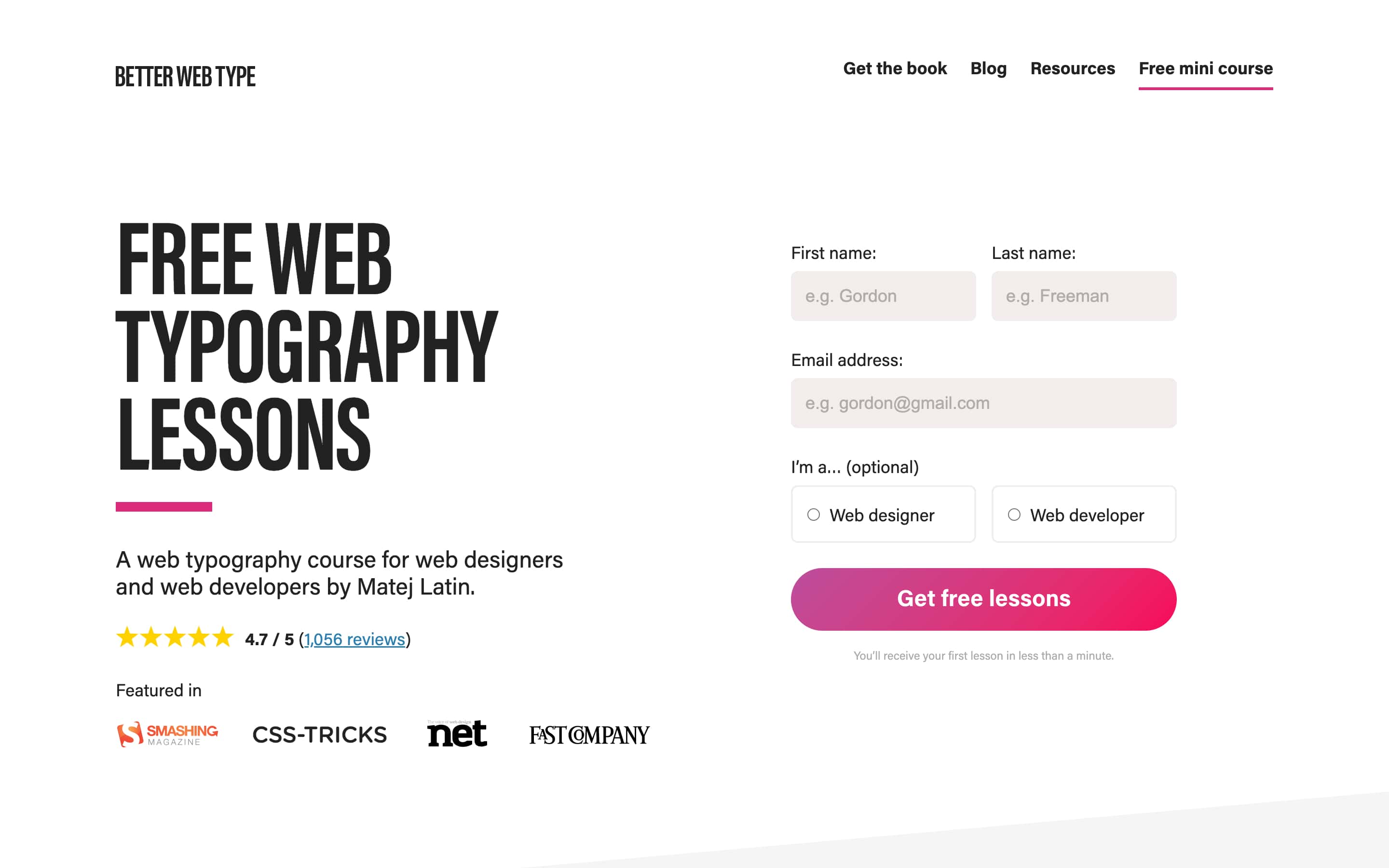A2102 Insights
Explore the latest trends and news on technology, lifestyle, and more.
Type It Right: The Secret Language of Web Typography
Unlock the secrets of web typography! Discover tips to elevate your design and captivate your audience. Type it right today!
The Basics of Web Typography: Understanding Fonts and Readability
Web typography plays a critical role in enhancing the readability and aesthetic appeal of your online content. Understanding the basics of typography involves recognizing the various types of fonts—serif, sans-serif, script, and display—which each convey different tones and can significantly impact user experience. For instance, while serif fonts offer a classic and formal impression, sans-serif fonts are often perceived as modern and clean. The right choice of typeface can create a lasting first impression and influence how visitors perceive your brand.
In addition to font selection, readability is paramount. Factors such as line height, letter spacing, and contrast between text and background all contribute to how easily text can be read on a screen. Aim for a line height of 1.5x the font size and consider using contrasting colors to ensure text stands out. By prioritizing typography, web designers can not only enhance readability but also guide users through the content seamlessly, ultimately leading to improved engagement and retention.

How to Choose the Right Typeface for Your Website: A Comprehensive Guide
Choosing the right typeface for your website is crucial for creating a positive user experience and conveying your brand’s message effectively. A well-selected typeface can enhance readability, guide the user's eye, and even influence conversion rates. To start, consider the tone of your content and the emotions you want to evoke. For example, a modern and clean sans-serif typeface might be suitable for a tech startup, while a more traditional serif typeface may work better for a legal firm. It’s essential to align the typeface choice with your overall branding to maintain consistency and professionalism.
Next, think about readability and accessibility across different devices. A good rule of thumb is to aim for a font size of at least 16 pixels for body text, ensuring that content is easily legible on both desktop and mobile screens. Additionally, pairing fonts can create a visually appealing hierarchy—choose a headline typeface that contrasts with your body text. Resources like Google Fonts provide a vast selection of typefaces and useful insights on pairing combinations. Ultimately, your choice should balance creativity with functionality to make your website not only beautiful but also user-friendly.
The Impact of Typography on User Experience: Does It Really Matter?
Typography plays a crucial role in shaping user experience (UX) on websites and applications. The way text is presented—not just in terms of font choice, but also size, spacing, and style—can greatly influence how users interact with and comprehend content. For instance, clear and readable fonts lead to better information retention and a smoother navigation experience. According to Smashing Magazine, well-chosen typography can enhance the visual hierarchy of a webpage, guiding users through the content effortlessly. A study from Nielsen Norman Group emphasizes that poor typography can lead to misunderstanding or misinterpretation of information, ultimately affecting users' engagement and satisfaction.
Moreover, typography is not only about aesthetics; it is also a matter of branding and user trust. Consistent text styles can create a sense of cohesiveness and reliability, while inconsistent typography can drive users away. According to research from UX Design, users often unconsciously associate specific fonts with different emotions and attributes, impacting their overall perception of the brand. Therefore, investing time in selecting appropriate typefaces and managing text layout can yield significant dividends in user satisfaction and retention. In conclusion, it’s evident that typography matters significantly in crafting a seamless and engaging user experience.